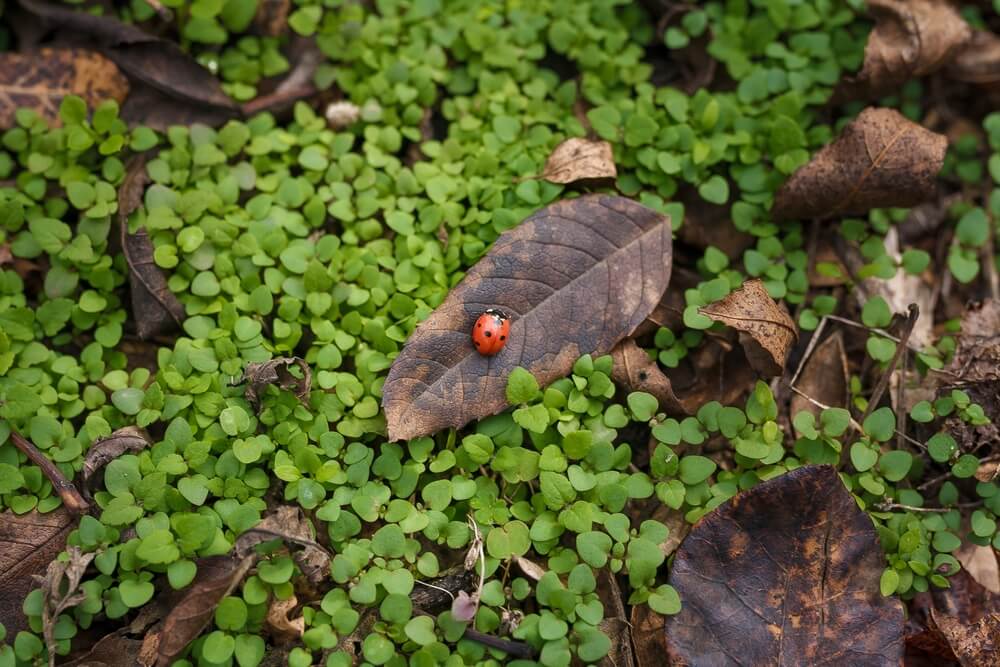11 Vital Ways To Support Beneficial Garden Bugs During Autumn And Winter!
Welcome! This article contains affiliate links, meaning I get a commission if you decide to make a purchase through my links, at no extra cost to you.
Bugs need your help! Insect populations have massively plummeted by more than 75% in some areas over the past few decades. And pollinators are disappearing at alarming rates. Remember when you used to drive along highways, and your windshield would have dozens of bugs all over it? Well, decades later, there are hardly ANY bugs while driving in the open country. Or anywhere else.
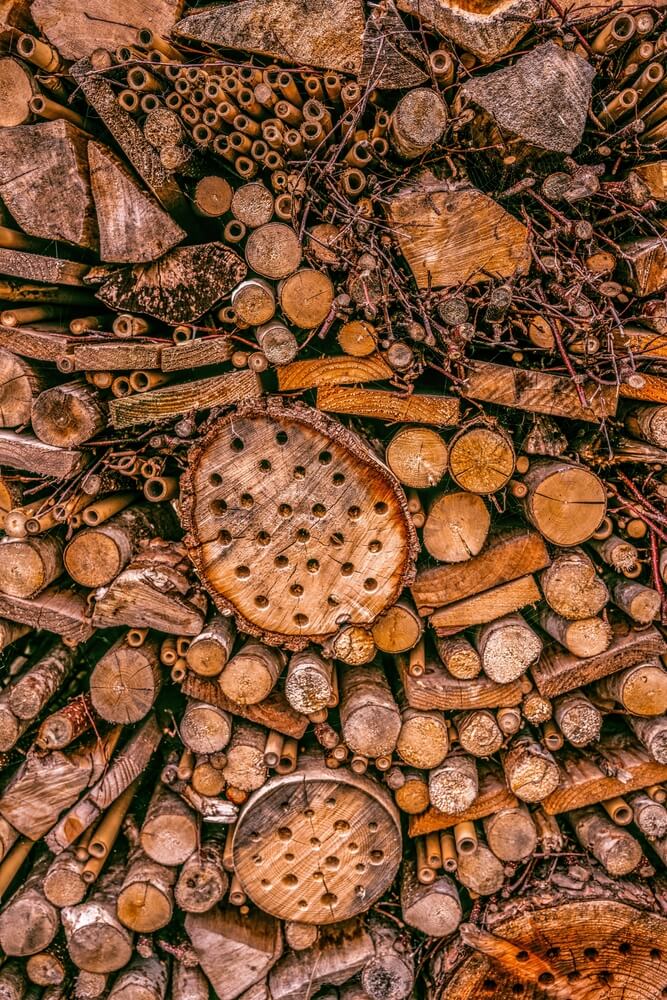
The good news? Your backyard can become a lifeline for these tiny heroes. And it takes way less effort than you’d think.
Sound intriguing?
Then let’s get to work saving the six-legged workforce that keeps our gardens (and food systems) running.
11 Ways To Support Beneficial Garden Insects During Fall And Winter
Here are 11 actionable tips for keeping friendly bugs safe this year.
1. Never Use Pesticides Or Herbicides
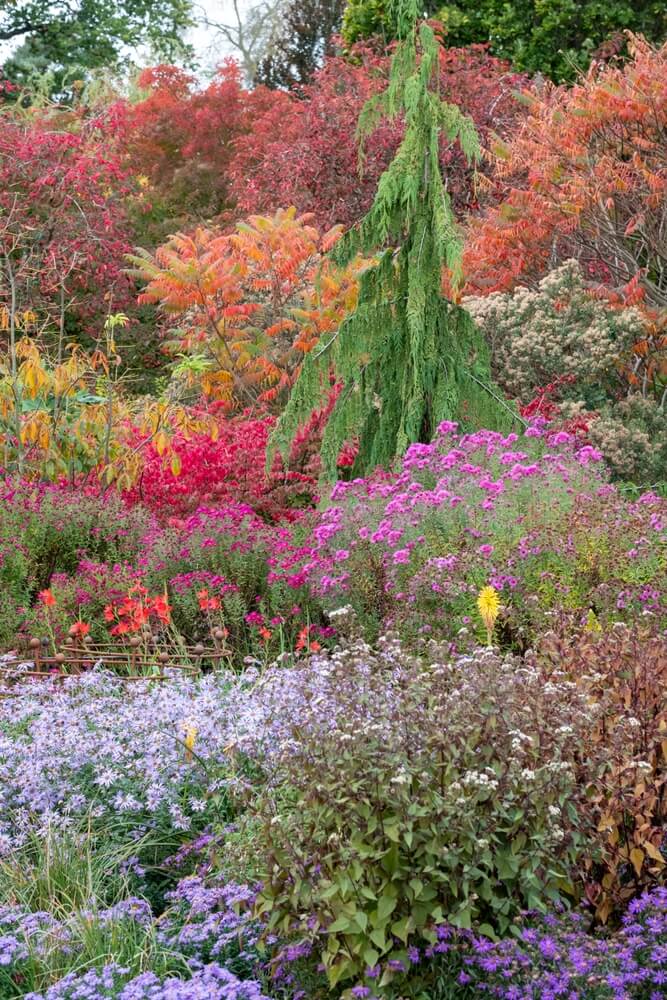
Here is the big one. The non-negotiable. The hill worth dying on. Chemical pesticides and herbicides are catastrophic for beneficial insects. Yes. Even the ones labeled “safe” for beneficial insects.
These products don’t discriminate between pests and helpers. Many pesticides mercilessly wipe out your ladybugs, native bees, butterflies, and ground beetles just as readily as they kill aphids and weeds.
Even worse, many pesticides persist in soil and plant tissues, continuing to poison insects long after application and contaminating the very flowers you’re trying to protect.
The insects that survive chemical exposure can suffer sublethal effects like impaired navigation, weakened immune systems, and reduced reproduction.
These cascading toxicities create a downward spiral that’s difficult to reverse. If you’re serious about supporting beneficial bugs, the first step is to put down the spray bottle and trust that a balanced ecosystem will handle pest problems naturally. (Which they almost always will.)
- Avoid all synthetic pesticides and herbicides, including neonicotinoids and glyphosate.
- Skip chemical treatments even for “problem” weeds. Many support specialist pollinators.
- Let beneficial insects handle pest control naturally. It takes time, but it works beautifully.
Trading your chemical arsenal for patience is the single most powerful thing you can do. Think of it as switching from nuclear warfare to hiring an elite peacekeeping force that works for free.
2. Keep A Wild Corner
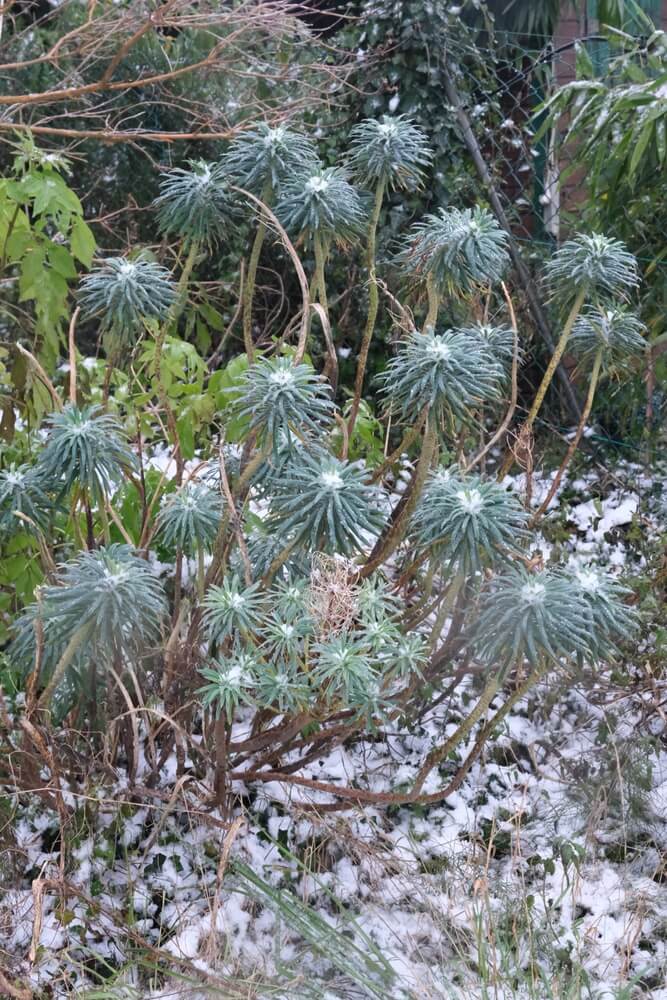
Your garden doesn’t need to be a pristine showpiece to be productive. In fact, a little chaos goes a long way for beneficial insects. Designating even a small corner of your property as a “wild zone” creates essential refuge for countless species that will repay you tenfold come spring.
These untamed pockets become bustling cities for ladybugs, ground beetles, native bees, and numerous other allies that keep pest populations in check and pollinate your crops. Think of it as setting aside a studio apartment for your hardest-working employees. They need somewhere safe to hunker down when temperatures drop.
- Preserve untamed zones with logs, brambles, and weeds. Creates overwintering microhabitats.
- Let fallen leaves and branches accumulate naturally. Adds insulation and shelter.
- Avoid clearing everything in the fall. Wild corners are tiny bug fortresses.
Your wild corner is basically the insect equivalent of a luxury bunker. It’s messy on the outside – and life-saving on the inside.
Read More – 17 Beautiful Pollinator Trees That Support Bees, Butterflies, And Wildlife!
3. Add A Shallow Water Source
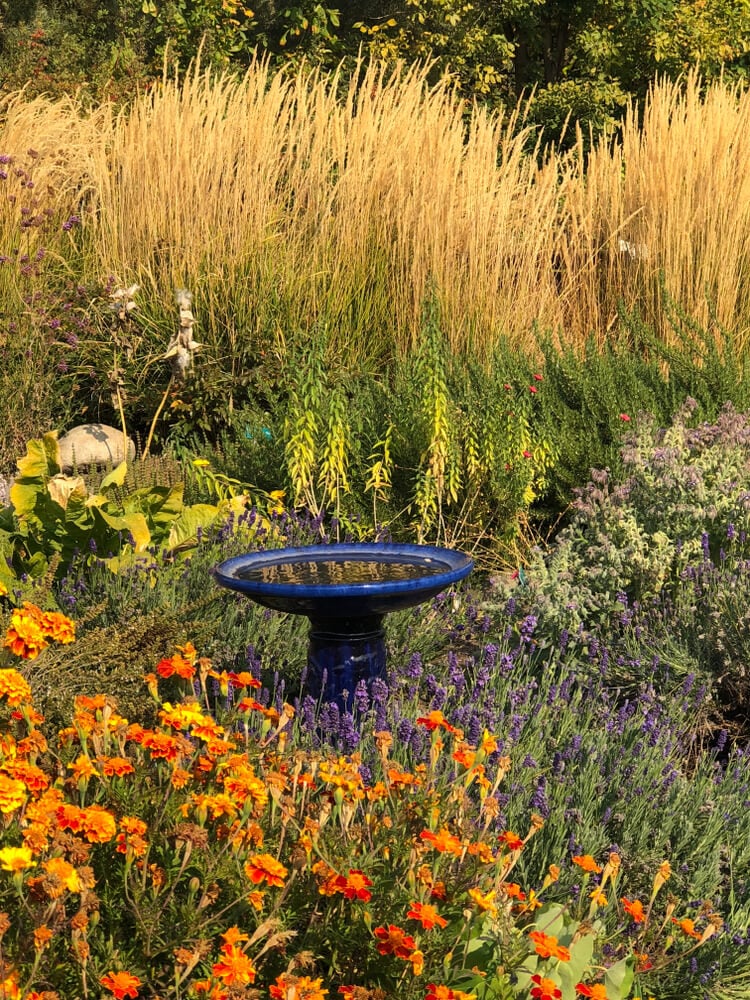
Even in cooler months, beneficial insects need hydration, especially during those deceptively dry autumn days and unexpected winter warm spells. A simple shallow dish with pebbles or stones creates a safe drinking station that prevents drowning while offering essential moisture to pollinators, predatory wasps, lacewings, and other garden helpers.
Water scarcity can drive beneficial insects away from your garden entirely, forcing them to seek resources elsewhere. And you want these allies sticking around. This simple gesture costs almost nothing but can mean the difference between a thriving insect population and a depleted one.
- Provide water trays with pebbles for pollinators and micro-predators.
- Refill regularly during dry spells to prevent dehydration.
- Place near shelters to minimize exposure to predators.
Think of your water source as a roadside diner for exhausted travelers. The only difference? Well, these travelers have six legs. And really appreciate good pebble placement.
4. Leave The Leaves
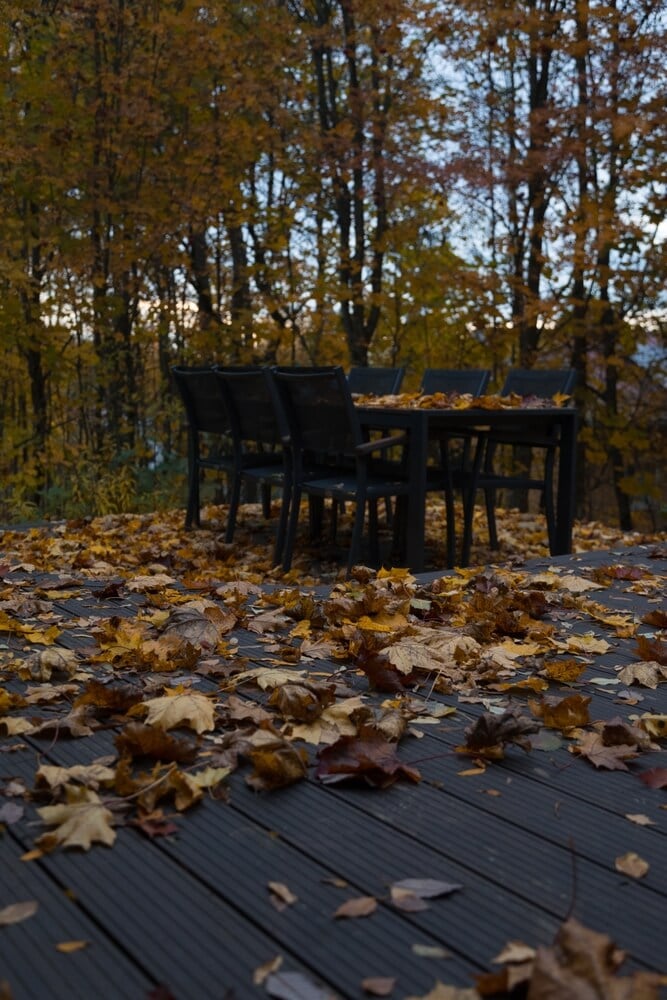
Resist the urge to rake every leaf into a bag with everything you’ve got. Leaf litter is nature’s original insulation system! It provides crucial protection for overwintering butterflies, beetles, moths, and countless larvae that will emerge as your pest-control squad next season.
These decomposing leaves also feed the soil food web, hosting beneficial fungi and microorganisms that improve soil structure and plant health. Many native bees and beneficial flies actually lay their eggs in leaf litter. Removing it destroys an entire generation of helpers before they even have a chance to hatch.
- Let leaf litter pile up. Provides food, shelter, and insulation.
- Avoid raking aggressively. A messy pile makes a great bug hotel.
- Mix with compost or twigs to create microhabitats.
Your neighbors might think you’re lazy. But your luna moth pupae and lady beetle larvae believe you are a genius!
Read More – 8 Ways To Support Native Bees And Pollinators In Your Backyard Garden
5. Grow Autumn Bloomers And Late Nectar Sources
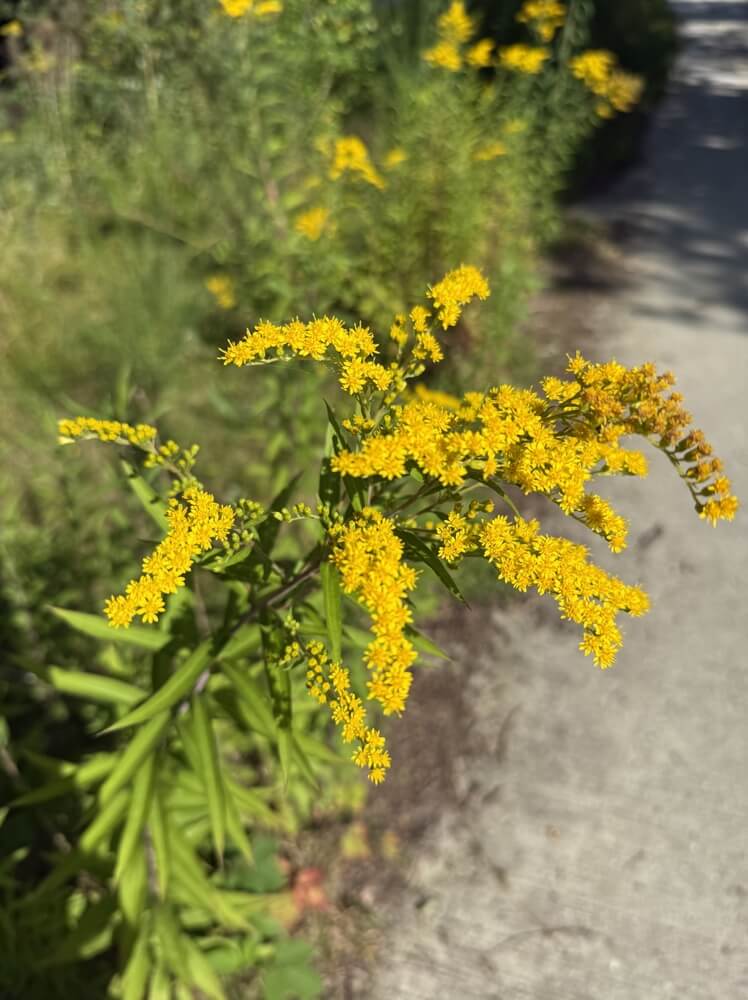
Just because frost is threatening doesn’t mean the pollinator party has to end. In fact, late-season nectar can be the difference between life and death for many beneficial species. Planting flowers that bloom well into autumn provides critical fuel for butterflies preparing to migrate, bumblebee queens searching for hibernation sites, and late-emerging native bees wrapping up their season.
These blooms also support beneficial hoverflies and parasitic wasps that continue hunting pests during mild fall days. By extending the buffet, you’re giving these hardworking insects the energy reserves they need to survive winter or complete their life cycles.
- Plant late-blooming flowers like calendula, alyssum, goldenrod, and asters.
- Provide nectar and pollen for insects flying until frost.
- Include herbs like thyme and sage. Either can help extend bloom times.
Growing late fall bloomers is like running a 24/7 bug hotel and diner when nobody else is open. You’ll have nonstop, hungry customers.
6. Skip The Mulch Mania
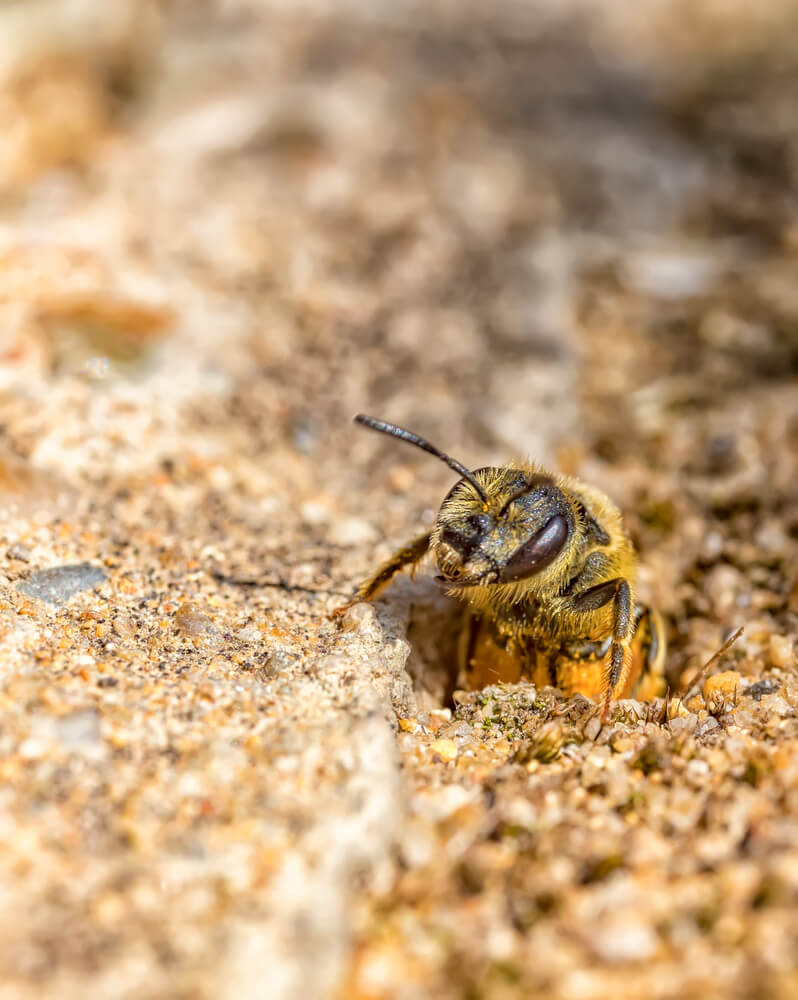
Mulch has its place. We’re not bashing it! That said, blanketing your entire garden in a thick layer each fall can smother the very insects you’re trying to protect. Many ground-nesting native bees (which make up the majority of North American bee species) need access to bare or lightly covered soil to create their nests and overwinter safely.
Ground beetles, which devour slugs, caterpillars, and other pests, also require soil access to burrow and hibernate. A strategic approach involves mulching in areas where you need weed suppression or moisture retention, while leaving patches of earth exposed to benefit your underground allies.
- Leave some bare soil for ground beetles and solitary bees.
- Avoid piling thick fresh mulch directly on overwintering insects.
- Use mulch sparingly in the fall to preserve microhabitats.
Too much of a good thing becomes a suffocation hazard. Even bugs need room to breathe (and burrow).
Read More – 9 Ways To Keep Wasps, Bumblebees, And Hornets Away From Hummingbird Feeders!
7. Celebrate The Web
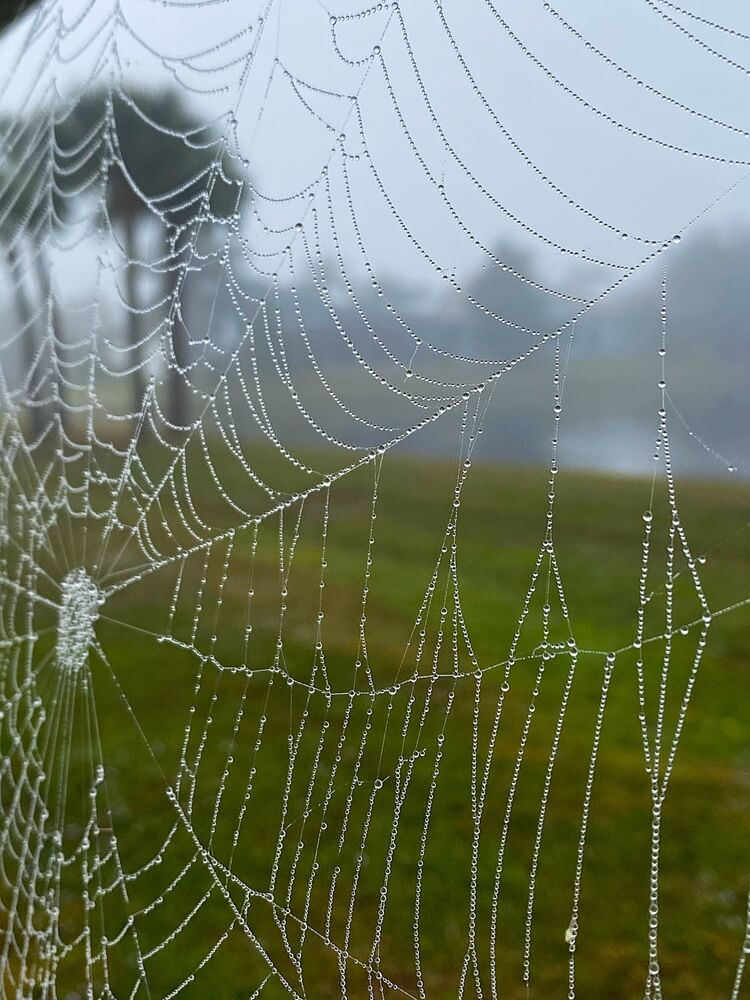
Spiders might give some folks the creeps. But these eight-legged engineers are among your garden’s most tireless pest controllers. And they don’t even bill you for their services. A single spider can consume hundreds of mosquitoes, aphids, flies, and other nuisances over a single season. And as autumn arrives, many of them are still hard at work, keeping late-season pests in check.
When temperatures drop, some spiders die off after laying their egg sacs. But others tuck themselves into bark, mulch, or corners of sheds to overwinter. Those delicate webs you see in your garage or porch? They’re not just clutter. They’re part of an ongoing pest-defense network that can persist through winter’s chill.
The best thing you can do is simple:
- Leave webs undisturbed, especially in sheds, garages, and eaves.
- Avoid pesticides near webs! Most of these spiders are beneficial hunters.
- Let natural shelter stand. Piles of leaves, tall grass, and plant stems give vital overwintering cover.
That dusty cobweb in your shed corner isn’t neglected. It’s a strategically positioned pest-control installation.
8. Plant For Next Year’s Bug Army
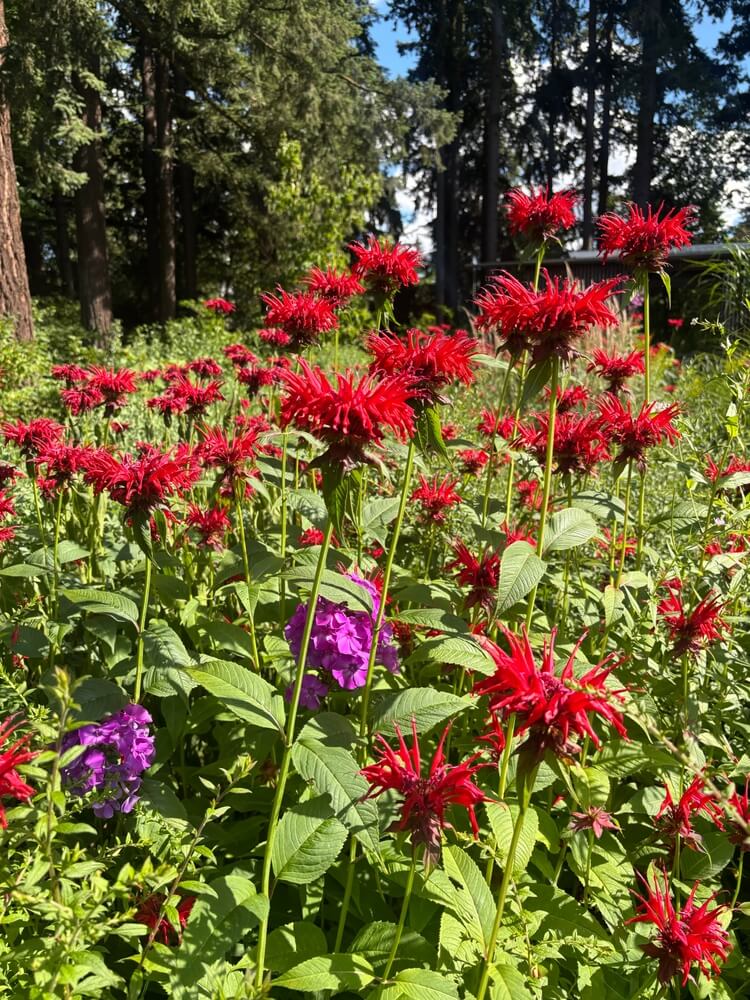
Autumn isn’t just about winding down. It’s prime time to plan your spring comeback by getting plants in the ground that will greet early-emerging pollinators with open blooms. Many beneficial insects emerge from overwintering sites in early spring when food sources are scarce, and having nectar and pollen immediately available can boost their survival rates dramatically.
Early-blooming perennials also support mason bees, mining bees, and other native specialists that fly before honeybees even think about leaving the hive. By planting now or planning for spring installation, you set the breakfast table for next season’s workforce.
- Include early-blooming perennials like yarrow, comfrey, echinacea, and bee balm.
- Provide food for pollinators first thing in spring.
- Strategically place plants near shelters for easy access.
Think of it as meal prep for March. Your future self (and your hungry pollinators) will thank your past self profusely.
Read More – How To Attract Bats To Your Garden – 13 Epic Flowers And Shrubs That Bats Love!
9. Compost Like You Mean It
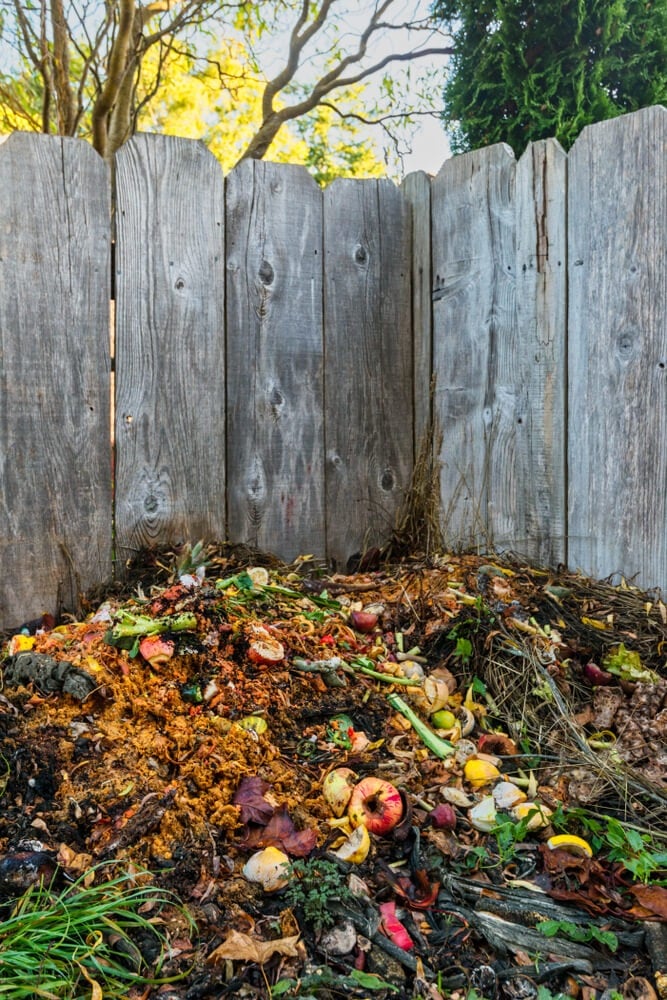
A thriving compost heap is more than just a waste-reduction strategy. It’s a bustling metropolis for decomposer insects, worms, and beneficial microorganisms. Ground beetles, rove beetles, soldier fly larvae, and countless other species colonize compost piles, break up organic matter, and control pest populations.
These decomposers create nutrient-rich castings and frass that supercharge your soil’s fertility, and many migrate into your garden beds to continue their pest-patrol duties. During winter, a well-maintained compost pile generates heat, providing a warm refuge for insects that would otherwise struggle to survive freezing temperatures.
- Keep a healthy compost heap as a “five-star spa” for decomposers.
- Attract beetles, worms, springtails, and microbes that enrich soil.
- Turn occasionally to maintain aeration and temperature.
Your compost pile is basically a heated resort where bugs check in to eat garbage and check out as soil-improving superheroes.
10. Build A Bug Hotel (That Actually Works)
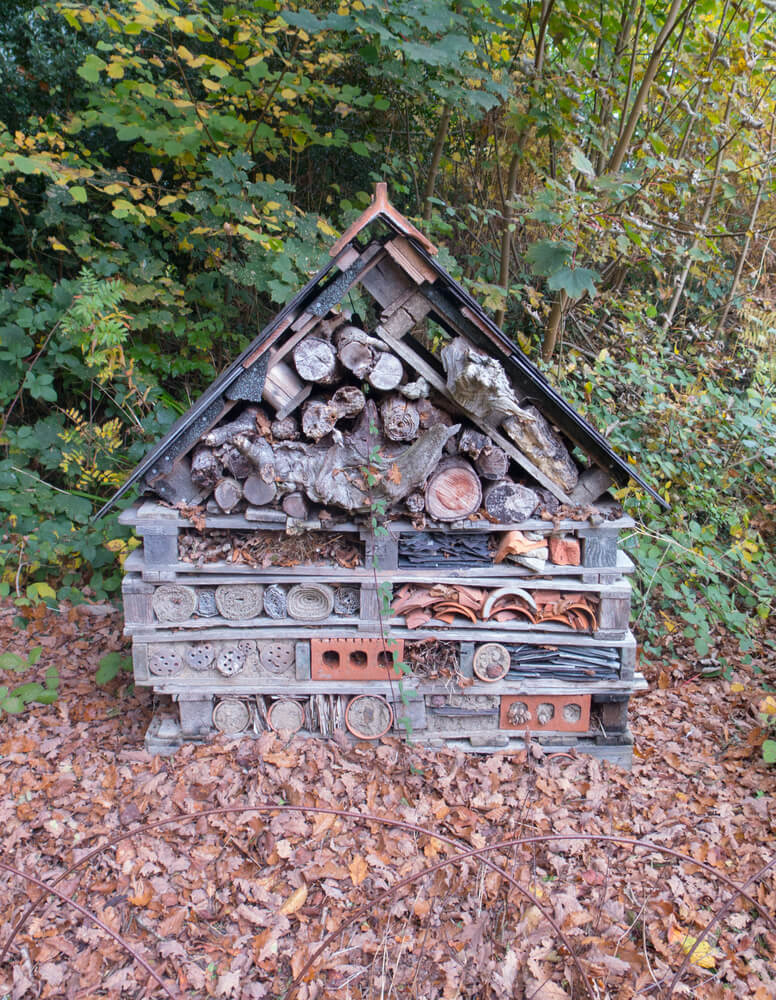
Fancy store-bought bug hotels often look prettier than they function. But a simple DIY structure using natural materials creates a genuine habitat that beneficial insects will actually use. The key is diversity. Different insects need different accommodations. Some prefer hollow stems (mason bees), bark crevices (lacewings), and pinecone gaps (ladybugs).
Location matters as much as construction. Position your hotel in a sheltered area, protected from harsh winds and direct rain, and ideally face south or southeast to capture the gentle morning sun. The beauty of a homemade bug hotel lies in its low cost and its ability to improve with age as insects colonize it season after season.
- Use sticks, pinecones, bark, and hollow stems.
- Skip store-bought gimmicks. Natural chaos is more effective.
- Place in sheltered, dry spots to protect overwintering insects.
If your bug hotel looks like a toddler designed it with a glue gun, congratulations! You’ve nailed the aesthetic that insects actually prefer.
Read More – Stop Buying Garden Plants – Grow These 21 Perennials From Scraps And Stems!
11. Keep The Stems Standing
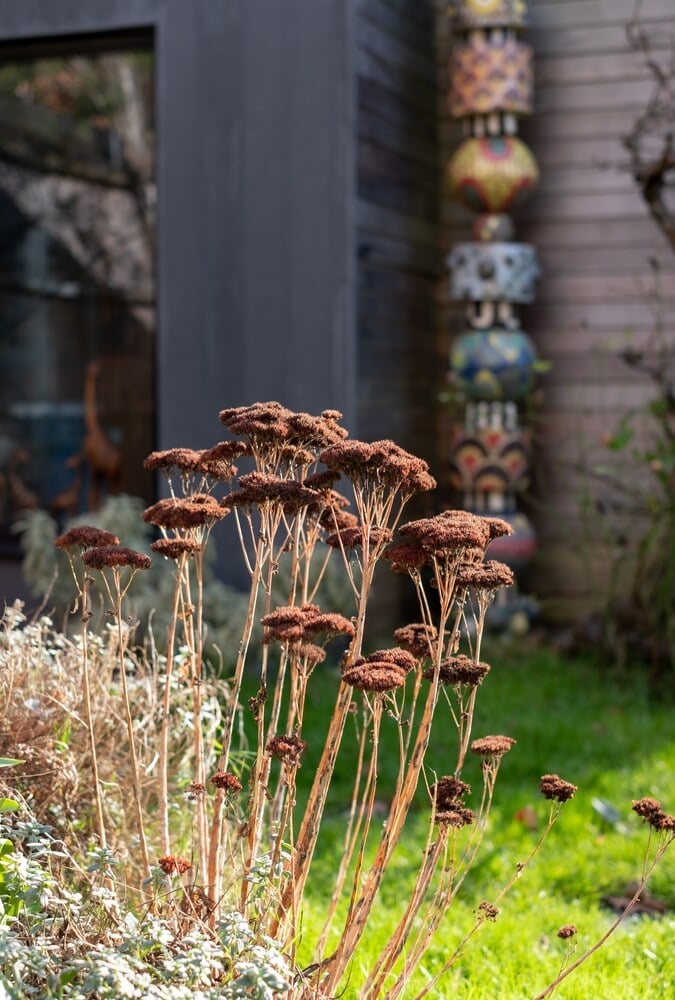
Those dead-looking perennial stalks might seem like garden clutter. Still, they’re actually premium real estate for overwintering insects. They provide hollow tubes and pithy centers where native bees, beneficial wasps, and beetles hunker down until spring. Cutting everything back in the fall has become a garden tradition. But it destroys countless beneficial insects before they ever get a chance to emerge and help you next season.
The hollow stems of plants like coneflowers, bee balm, sunflowers, and Joe Pye weed serve as natural nesting and hibernation sites, and many species won’t survive without them. Waiting until spring to do your cutback gives these insects time to complete their life cycles and emerge safely.
- Leave hollow stems from perennials and wildflowers for overwintering condos.
- Chop stems only in spring, not fall.
- Supports bees, beetles, and other beneficial insects naturally.
Standing stems might not win you any tidy-garden awards, but they’ll definitely win you a blue ribbon for “Most Bee-Friendly Landlord of the Year.”
Conclusion
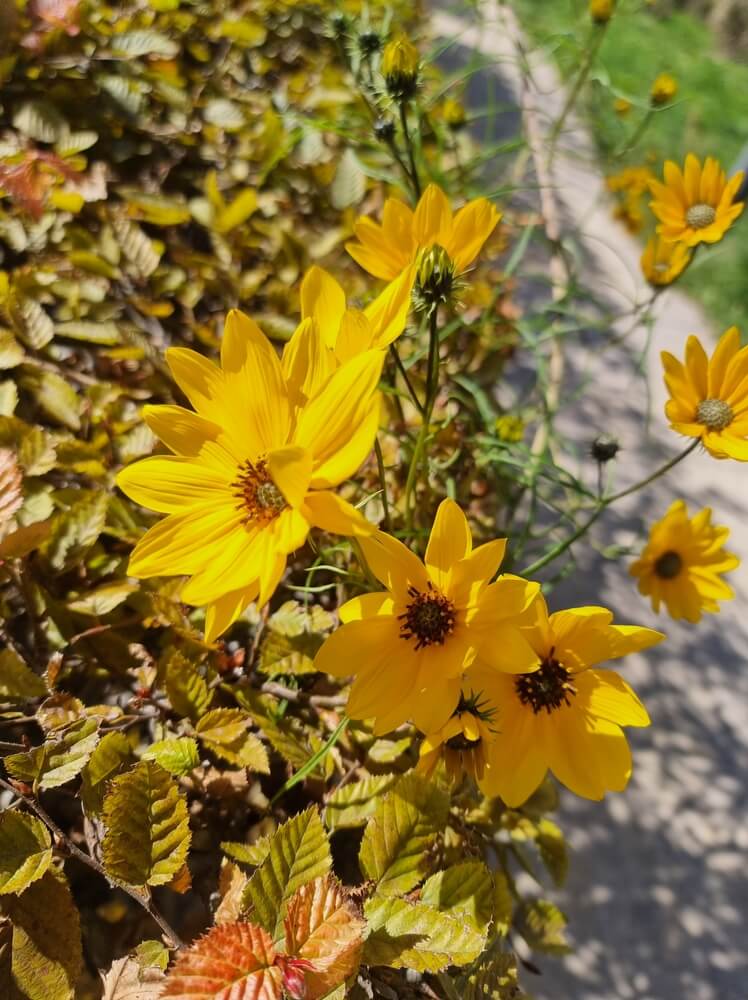
The best part about supporting beneficial bugs? Most of these strategies involve doing less work, not more. These lazy gardening tactics (Ruth Stout approved) mean you can be relaxed and heroic at the same time. Your slightly messy, bug-friendly garden will reward you with healthier plants, better pollination, and a thriving ecosystem that basically runs itself.
What about you?
- Have you also noticed a dramatic decrease in your local bug populations?
- Do you have fewer bees and butterflies than, say, five or ten years ago?
- Will you do your part by leaving the leaves be?
Thanks for reading.
Have a great day!

